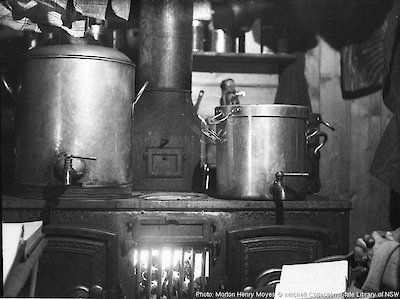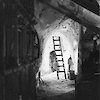The Grottoes: Construction
‘The hut is very satisfactory, so far,’ reported Harrisson in March. But on the same day he noted the factor that was to so dominate their existence on Shackleton Ice Shelf: the rapid accumulation of snow. The Hut, he said, was now ‘so snowed up, there is little to catch the wind’.
But there was a new problem. Digging their way out of the Hut and making their way about nearby made every outdoor task — from weather observations to collecting stores for a meal — into a major logistical exercise. Then a four-day blizzard early in April dumped a prodigious amount of snow, requiring an hour’s effort by all hands to dig their way out. Something had to be done.
The men’s solution utilised the accumulated snow to their advantage, making it into a shelter from the icy blast.
It started with a 12-metre tunnel through the snow to a place whose topography, it was estimated, would create a wind scour that would keep an opening reasonably clear. A vertical shaft at the end of the tunnel was topped with a timber structure around a trapdoor, kept well above the surface to prevent it drifting over. The trapdoor would be reached from below via a ladder.
That job finished, everyone pitched in to dig side-tunnels to serve as store-rooms. Eventually these side excavations took on an identity of their own — a system of under-snow caverns that made most things accessible without exposure to the elements.
As Wild noted: ‘We were now self-contained, and everything was accessible and immune from the periodic blizzards’. The tunnels gave rise to a new perception of the ice-shelf home:
Winter Quarters now became a series of grottoes and henceforth was appropriately designated ‘The Grottoes’ …


